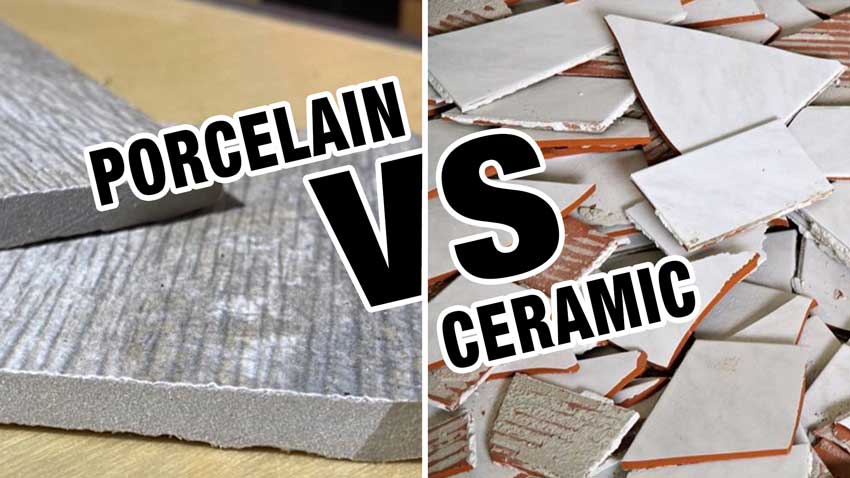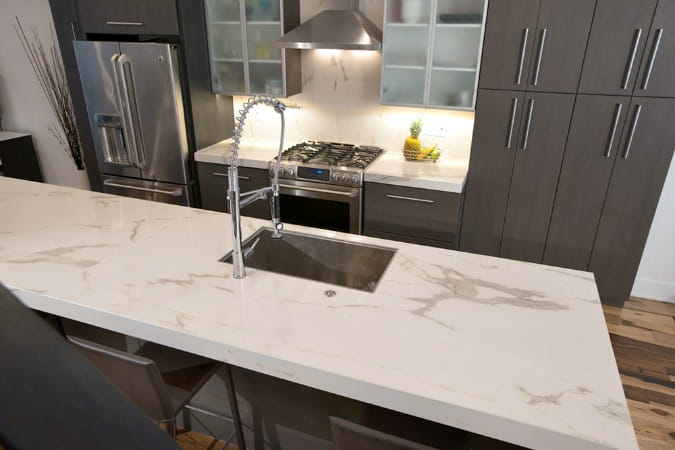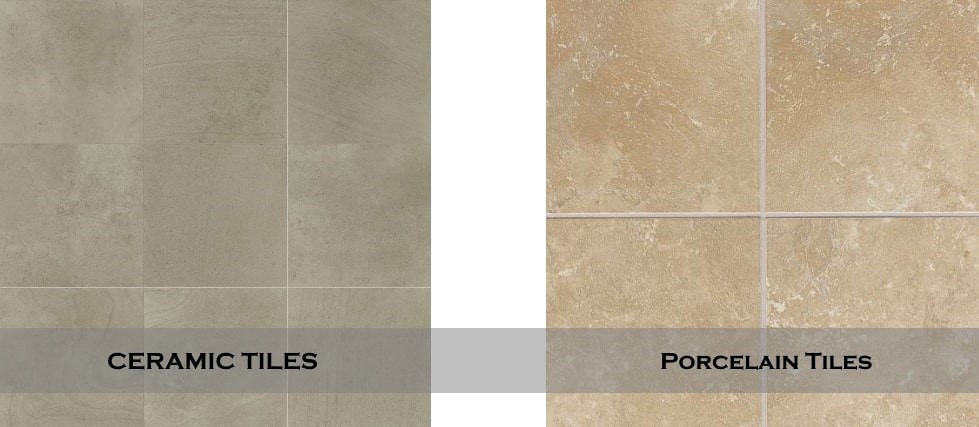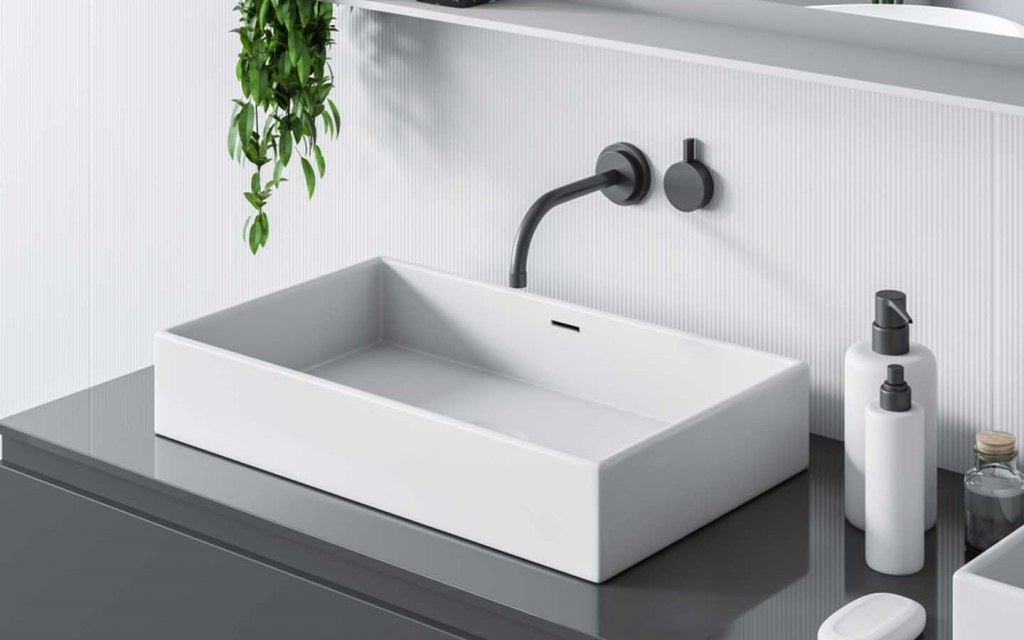When it comes to choosing a bathroom sink, two popular options are ceramic and porcelain. While both are great choices, there are some key differences between them that may influence your decision. In this article, we will explore the top 10 main differences between ceramic and porcelain bathroom sinks to help you make an informed decision for your next bathroom renovation project.Differences between ceramic and porcelain bathroom sinks
Before we dive into the differences, it's important to understand the basic characteristics of ceramic and porcelain bathroom sinks. Ceramic sinks are made from a mixture of clay, minerals, and water that is molded and then fired in a kiln. Porcelain sinks, on the other hand, are made from a combination of clay, feldspar, quartz, and kaolin that is fired at an extremely high temperature. This process results in a more durable and stain-resistant sink compared to ceramic. Now, let's take a closer look at the main differences between these two materials.Ceramic vs porcelain bathroom sinks
One of the main advantages of ceramic sinks is that they are more affordable compared to porcelain. They also come in a wide variety of colors and patterns, making it easy to find one that matches your bathroom decor. However, ceramic sinks are more prone to chipping and scratching, and they can also stain more easily. Porcelain sinks, on the other hand, are extremely durable and resistant to scratches and stains. They are also more hygienic, as they have a non-porous surface that makes it difficult for bacteria and germs to grow. However, porcelain sinks can be more expensive and have a limited range of color options.Pros and cons of ceramic and porcelain bathroom sinks
The answer to this question ultimately depends on your personal preferences and needs. If you are on a budget and don't mind a few imperfections, a ceramic sink may be the better option for you. However, if you want a sink that will last for years and require minimal maintenance, a porcelain sink may be the way to go.Which is better: ceramic or porcelain bathroom sinks
As mentioned earlier, porcelain sinks are much more durable than ceramic sinks. This is due to the high firing temperature and the use of strong materials like quartz and feldspar. Porcelain sinks can withstand heavy use and are less likely to chip or scratch compared to ceramic sinks. Ceramic sinks, on the other hand, are more prone to damage and may need to be replaced more frequently. They are also not as resistant to heat, which means they can crack if hot objects are placed on them.Durability of ceramic vs porcelain bathroom sinks
Both ceramic and porcelain sinks are relatively easy to maintain. They can be cleaned with mild soap and water, and both materials are resistant to most household chemicals. However, as mentioned earlier, ceramic sinks are more prone to stains and may require more frequent cleaning compared to porcelain sinks. It's important to avoid using abrasive cleaners or tools on both types of sinks, as this can damage the surface and lead to scratches and chips.Maintenance of ceramic and porcelain bathroom sinks
Ceramic sinks are generally more affordable compared to porcelain sinks, with prices ranging from $50 to $200. Porcelain sinks, on the other hand, can cost anywhere from $100 to $500, depending on the size and design. Keep in mind that these prices may vary depending on the brand and retailer you purchase from.Cost comparison: ceramic vs porcelain bathroom sinks
Both ceramic and porcelain sinks come in a variety of designs, shapes, and sizes. However, porcelain sinks tend to have a more sleek and modern look, while ceramic sinks offer more traditional and rustic options. Porcelain sinks also have a greater range of color options, including white, black, and various shades of gray. Ceramic sinks, on the other hand, often have more intricate designs and patterns, making them a great choice for adding a touch of character to your bathroom.Design options for ceramic and porcelain bathroom sinks
The installation process for both ceramic and porcelain sinks is relatively similar. It is recommended to hire a professional to ensure the sink is installed correctly and to avoid any potential damage during the process. Both types of sinks can be installed as an undermount or drop-in sink, depending on your preference.Installation process for ceramic and porcelain bathroom sinks
When it comes down to choosing between ceramic and porcelain bathroom sinks, it's important to consider your budget, style preferences, and durability needs. If you're looking for a budget-friendly option with more design choices, ceramic may be the way to go. However, if you want a long-lasting, low maintenance sink with a modern look, porcelain may be the better choice. Overall, both ceramic and porcelain bathroom sinks are great options for any bathroom. With proper care, they can both last for years and add a touch of elegance to your space. Consider your needs and preferences carefully before making a decision, and consult with a professional for further guidance.How to choose between ceramic and porcelain bathroom sinks
Understanding the Difference Between Ceramic and Porcelain Bathroom Sinks

Which Material is Right for Your Bathroom Design?
 When it comes to designing a bathroom, every detail matters. From the color scheme to the fixtures, every element plays a role in creating the overall aesthetic and functionality of the space. One important decision to make in the bathroom design process is choosing the right type of sink. While there are many options available, two of the most popular choices are ceramic and porcelain sinks. Let's take a closer look at the differences between these two materials and which one may be the best fit for your bathroom.
Ceramic Sinks
Ceramic sinks are made from clay that is fired at high temperatures, resulting in a smooth, glossy finish. This type of sink is known for its durability and resistance to stains and scratches. Additionally, ceramic sinks come in a variety of shapes, sizes, and colors, making them a versatile choice for any bathroom design. They are also typically more affordable than porcelain sinks, making them a budget-friendly option.
Porcelain Sinks
Porcelain sinks, on the other hand, are made from a mixture of clay and other materials that are then fired at even higher temperatures. This results in a sink that is even more durable and resistant to stains and scratches than ceramic. Porcelain sinks also have a more elegant and refined look, often featuring intricate designs and patterns. However, this comes at a higher price point.
Which One is Right for You?
When deciding between ceramic and porcelain sinks, there are a few factors to consider. If you are looking for a durable and budget-friendly option, ceramic sinks may be the way to go. On the other hand, if you want a more luxurious and high-end look, porcelain sinks are the better choice. It's also important to consider the overall design of your bathroom and which sink material will complement it best.
In the end, both ceramic and porcelain sinks have their own unique benefits and it ultimately comes down to personal preference and budget. Whichever material you choose, make sure to properly maintain and clean your sink to keep it looking beautiful for years to come.
When it comes to designing a bathroom, every detail matters. From the color scheme to the fixtures, every element plays a role in creating the overall aesthetic and functionality of the space. One important decision to make in the bathroom design process is choosing the right type of sink. While there are many options available, two of the most popular choices are ceramic and porcelain sinks. Let's take a closer look at the differences between these two materials and which one may be the best fit for your bathroom.
Ceramic Sinks
Ceramic sinks are made from clay that is fired at high temperatures, resulting in a smooth, glossy finish. This type of sink is known for its durability and resistance to stains and scratches. Additionally, ceramic sinks come in a variety of shapes, sizes, and colors, making them a versatile choice for any bathroom design. They are also typically more affordable than porcelain sinks, making them a budget-friendly option.
Porcelain Sinks
Porcelain sinks, on the other hand, are made from a mixture of clay and other materials that are then fired at even higher temperatures. This results in a sink that is even more durable and resistant to stains and scratches than ceramic. Porcelain sinks also have a more elegant and refined look, often featuring intricate designs and patterns. However, this comes at a higher price point.
Which One is Right for You?
When deciding between ceramic and porcelain sinks, there are a few factors to consider. If you are looking for a durable and budget-friendly option, ceramic sinks may be the way to go. On the other hand, if you want a more luxurious and high-end look, porcelain sinks are the better choice. It's also important to consider the overall design of your bathroom and which sink material will complement it best.
In the end, both ceramic and porcelain sinks have their own unique benefits and it ultimately comes down to personal preference and budget. Whichever material you choose, make sure to properly maintain and clean your sink to keep it looking beautiful for years to come.



:max_bytes(150000):strip_icc()/porcelain-tile-vs-ceramic-tile-1822583-FINAL-5b1ab0f043a1030036a6e6cc.png)











/showerceramictile-GettyImages-1086734512-7b6b90f05ec646b29efdb5f01300e122.jpg)






































/bathroom-ceramic-tile-vs-vinyl-plank-1822815-FINAL-5bae841646e0fb002670b7c6.png)































